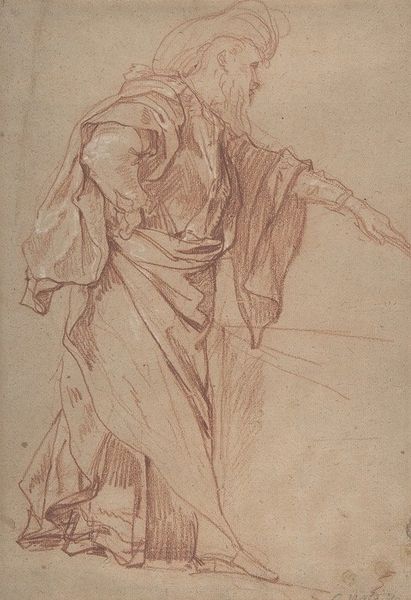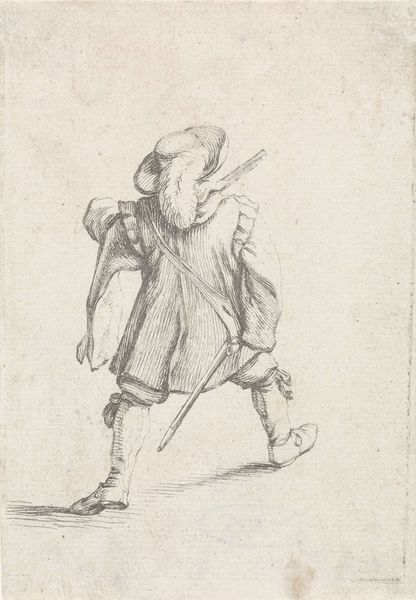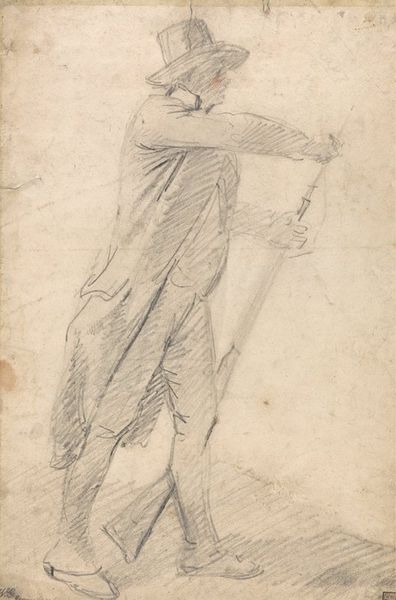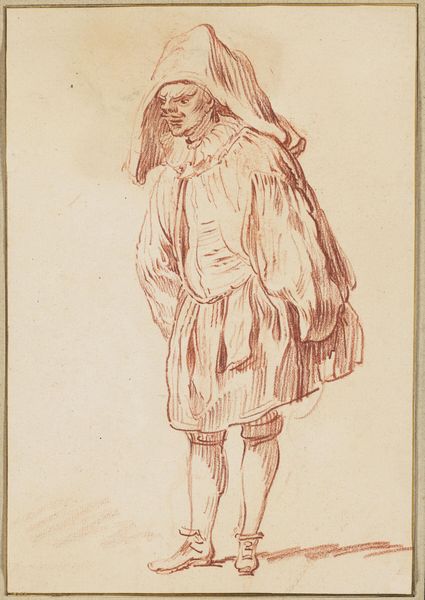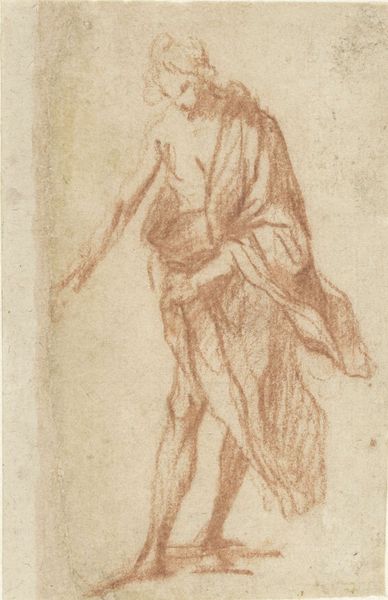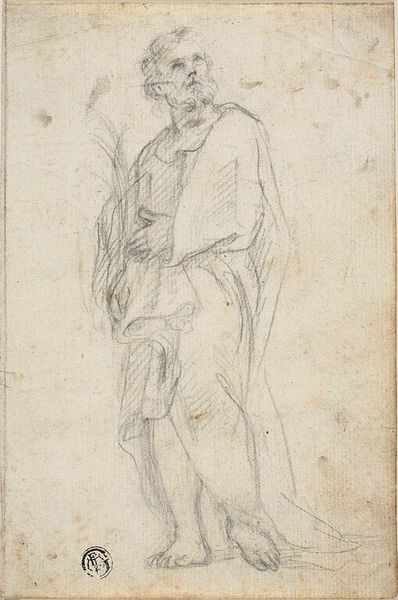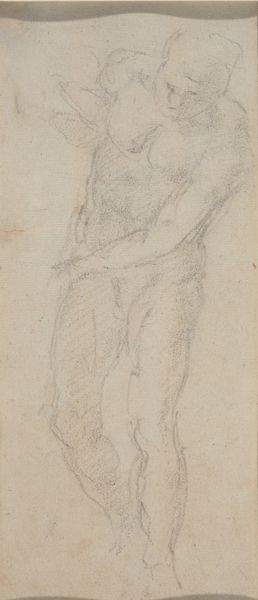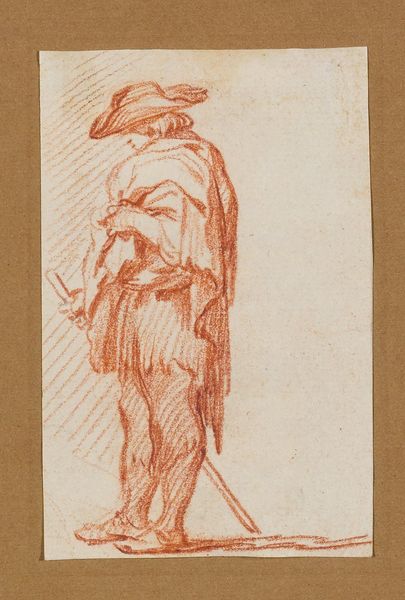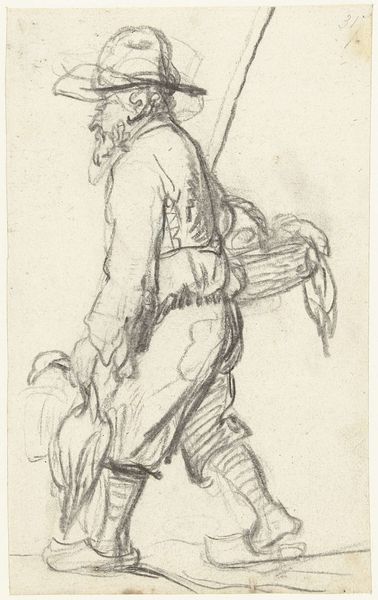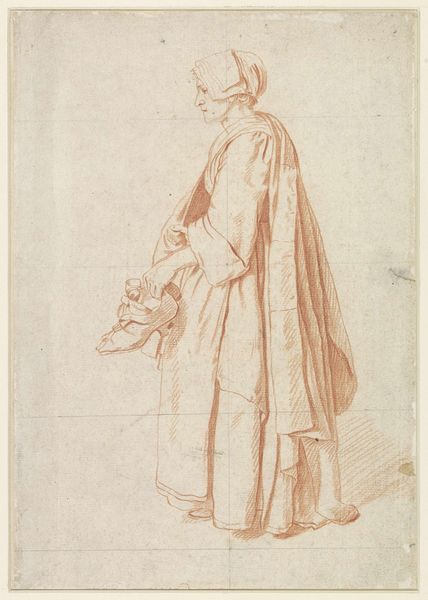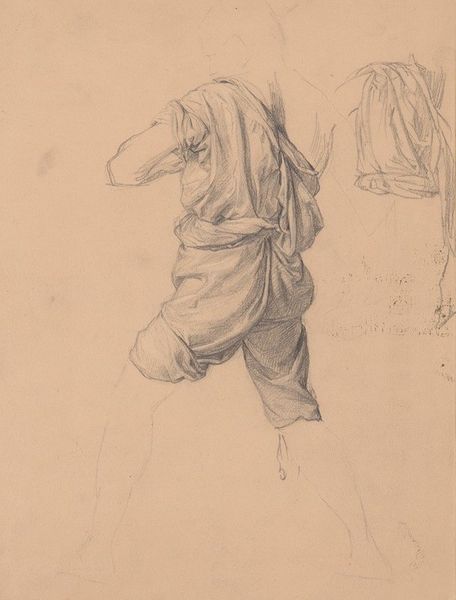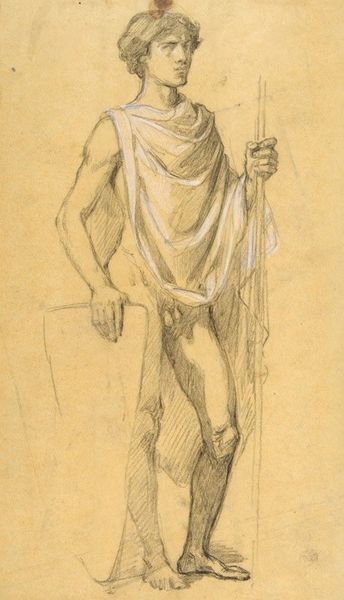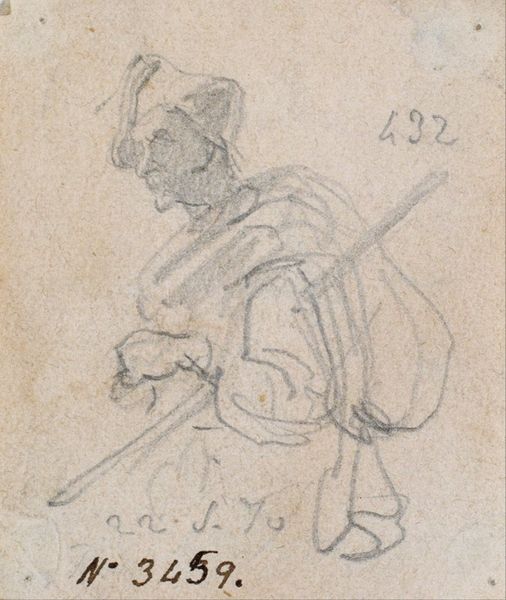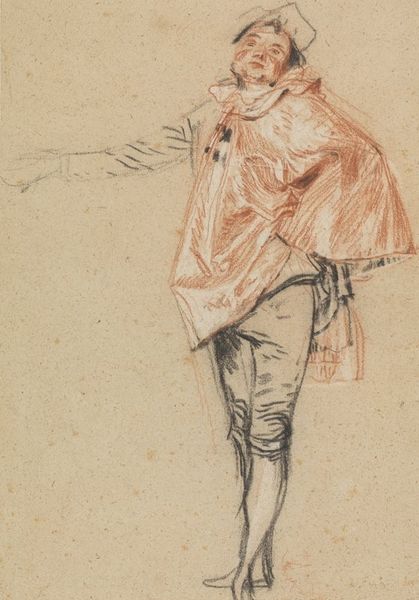
Copyright: Public Domain: Artvee
Curator: This is Théodore Chassériau’s “Cassio Bowing,” a pencil drawing on paper from 1852. What strikes you immediately? Editor: There's an air of subdued melancholy about the figure. His posture, the downcast gaze, and even the muted tones of the pencil all convey a sense of resignation. Curator: Absolutely. Chassériau’s involvement in the Shakespearean play, Othello, through a commission by the actor Joanny, sheds some light here. This drawing likely captures Cassio, the wrongly accused lieutenant, in a moment of disgrace, reflecting themes common in Romanticism, such as emotional intensity and inner turmoil. Editor: I'm interested in Cassio’s partially exposed leg, emerging from the drapery; how might his near-nudity play into his disempowerment? His body, normally clothed as a figure of military authority, becomes vulnerable. The romanticizing of suffering, often depicted as a lone man. Curator: An insightful reading. Consider also that theatrical performances often carried social and political resonance in 19th-century France, particularly Shakespeare, where the stage acted as a platform for discussing societal concerns, like race and justice, indirectly confronting issues present in colonial politics. Cassio, stripped of his honor and almost of his clothes. Editor: So this isn’t just Cassio, but all young Black men navigating identity? Even the staff could be an instrument rather than simply what they need to carry themselves, or, a weaponized element in a system set on self-destruction. Curator: A powerful interpretation. I appreciate how you connect the historical specificity to broader contemporary concerns about marginalization. This is what art should do, spark meaningful conversations that bridge the past and present. Editor: Thank you. I’m compelled by how seemingly quiet works such as this allow one to examine cultural and structural conditions.
Comments
No comments
Be the first to comment and join the conversation on the ultimate creative platform.
